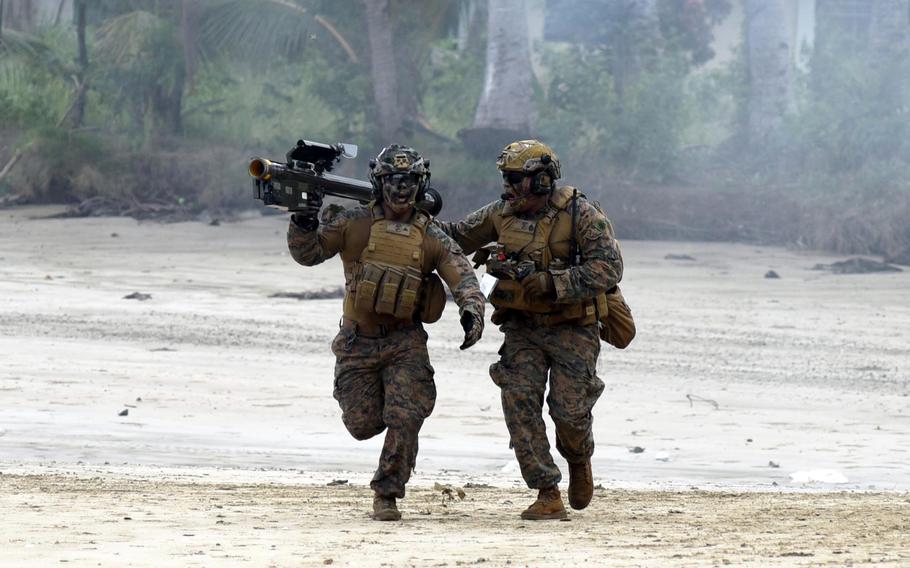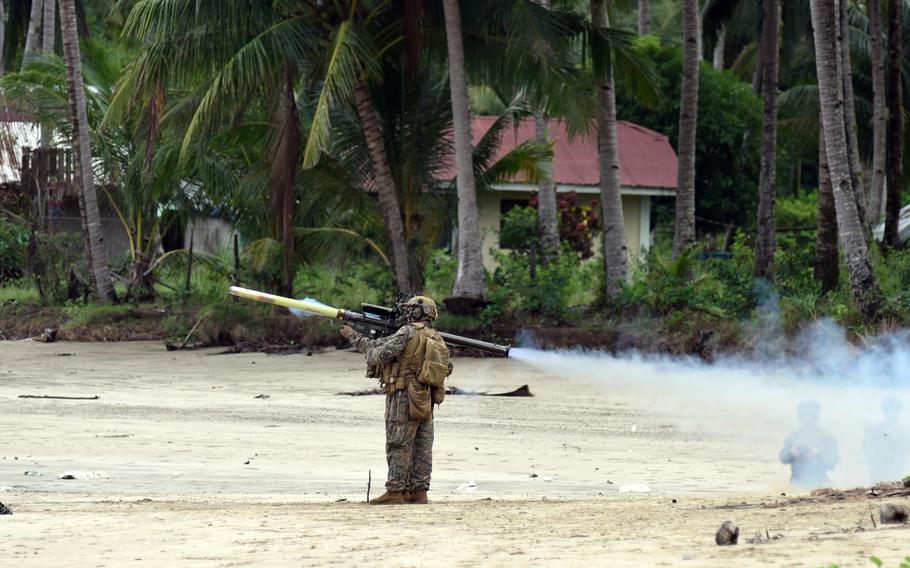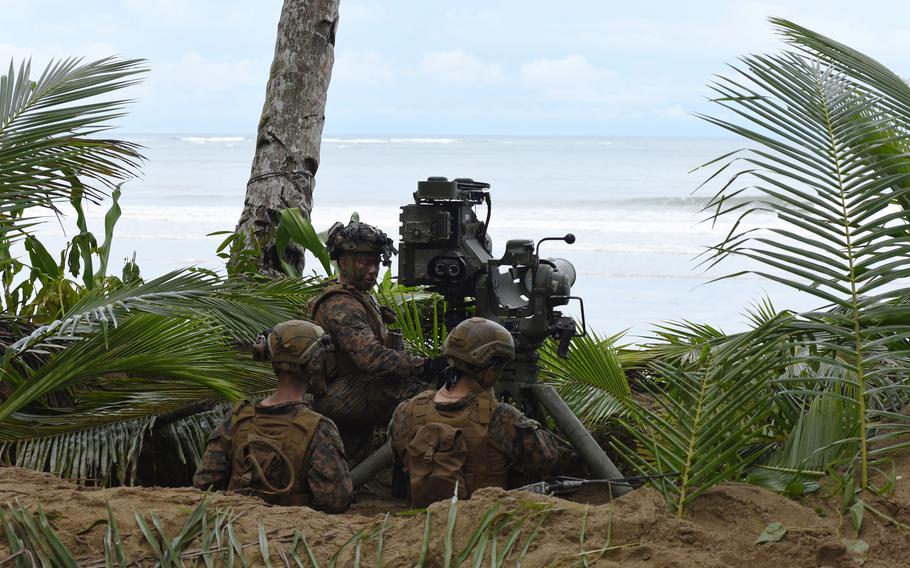
A fellow member of the 15th Marine Expeditionary Unit congratulates Cpl. Celestino Arellano, left, who sank a target boat with a Stinger ground-to-air missile from Palawan, Philippines, Oct. 22, 2024. (Seth Robson/Stars and Stripes)
PALAWAN, Philippines — A Stinger ground-to-air missile destroyed a target boat off the Philippines’ westernmost major island during a U.S.-Philippine counter-landing drill Tuesday.
Marine Cpl. Celestino Arellano, of Austin, Texas, took aim with the shoulder-mounted weapon from the sand at the red canoe-length boat.
Members of the 15th Marine Expeditionary Unit planned to down a small target drone with the Stinger, but the target crashed on the beach. They turned the sights of their air-defense weapon instead on a vessel similar to the canoes used by local fishermen moored several hundred yards off Palawan’s western shore.
This drill would simulate a defense against an attempted amphibious landing
The Stinger is a portable, short-range, air-defense weapon that can be shoulder-launched or fired from a helicopter or ground launcher, according to its manufacturer, Raytheon.
The missile is equipped with a proximity fuse to counter drone threats and has been in use with 19 countries and the U.S. military since the 1980s. It’s proven itself a pivotal weapon in Afghanistan and in Ukraine, among other conflicts. The Stinger has a range of several miles.
“Combat proven in four major conflicts, the weapon has more than 270 fixed- and rotary-wing intercepts to its credit,” Raytheon’s website states.

A member of the 15th Marine Expeditionary Unit fires a Stinger ground-to-air missile from the west coast of Palawan, Philippines, Oct. 22, 2024. (Seth Robson/Stars and Stripes)
This was Arellano’s first time firing a Stinger and something he’d trained three years for at Camp Pendleton, Calif.
The weapon fired in a cloud of smoke that briefly obscured Arellano and several other Marines as a missile streaked toward the boat.
The shot hit home in a blast that sent the target vessel to the bottom and prompted cheers from a crowd of Marines and locals watching from nearby dunes.
“It was very exciting,” Arellano told Stars and Stripes afterward. “All you feel is the wind from the launch motor and a whole bunch of smoke and then you hear everybody cheer and you say, ‘Oh, I hit it.’”
The young Marine, his buddies and troops from the Philippine’s 3rd Marine Brigade, based on Palawan, had dug fighting positions in dunes overlooking the beach.
They all appeared to relish the experience.

U.S. Marines man a tube-launched, optically tracked, wire-guided, or TOW, anti-tank missile during counter-landing drills on the west coast of Palawan, Philippines, Oct. 22, 2024. (Seth Robson/Stars and Stripes)
They were on Palawan for the annual Kamandag exercise that began Oct. 15 and ends Friday. This year’s training involves more than 1,000 Marines from the three-year-old Marine Rotational Force-Southeast Asia and the 15th MEU.
“It was good realistic training,” Arellano said after the live-fire training. “I liked the part where we got to dig holes and set up defensive positions like they did in World War II. It felt good being able to do that as a modern Marine.”